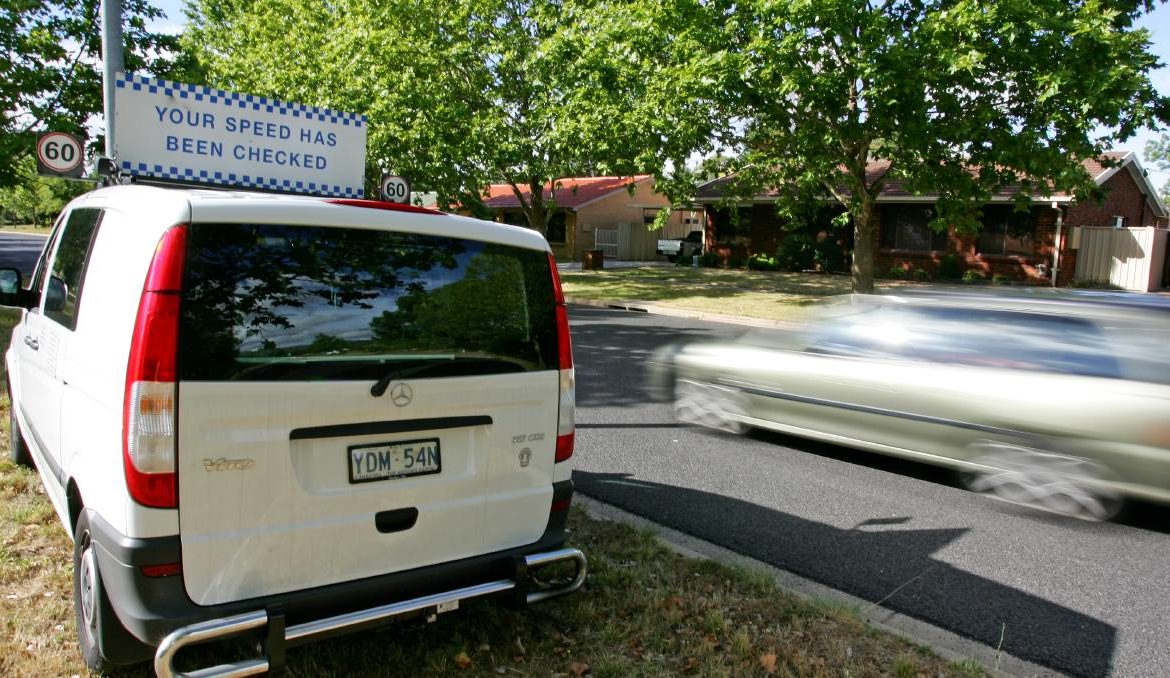news, latest-news, mobile speed cameras, speed detection, camera vans
Two more mobile speed camera vans are being outfitted to join the fleet this year but the ACT government has no intention of following the NSW example of stripping identification from the vehicles it uses, or removing the rooftop warning signs. The ACT government fleet of mobile vans will increase to 10 and with it, the vans’ operational hours will increase from around 2200 per month to around 2700. From June 30, 2019 to May last year, the eight existing mobile vans generated $979,068.44 in speeding revenue for the ACT government, it was disclosed in the ACT Assembly last year. “Work will commence shortly to fit out the [new] vans with all the equipment, electrical power supplies and cameras,” a Transport Canberra spokesman said. “Staff will then be employed to operate the cameras and they will be provided with appropriate training and authorised under the Road Transport regulations. “These cameras play an important part in the strategy to change driver behaviour and achieving compliance.” The move by NSW to make its mobile speed cameras more “covert” rather than “overt” has been criticised by the NRMA, which says the visual identification of the vans serves the purpose of educating drivers about locations with a crash history. “We support the use of cameras and we support the use of warning signs. We think they play an important role in education,” NRMA spokesman Peter Khoury said. “Speed cameras are put in locations with a crash history and, without the signs, we would miss an opportunity to tell people to slow down.” Mr Khoury said the goal was to change driver behaviour when behind the wheel, “not three weeks later when they get a fine in the mail”. With South Australia, Western Australia, Queensland and Victoria no longer identifying their speed detection vehicles, the ACT now remained the only jurisdiction where the white camera vans, with “your speed has been checked” signs prominent on the roof, together with the posted speed limit for the zone in which they were operating, could be easily spotted. As well as scrapping its advisory signs, the NSW government would triple the current number of mobile speed camera enforcement hours per month to 21,000 – by far the highest in the country. NSW Transport Minister Andrew Constance said the move was about “changing culture and changing behaviour”. Monash University modelling showed the changes could save between 34 and 43 lives, and prevent 600 serious injuries each year. In its 2018 speed review, the NSW government report found across 1024 sites where the mobile cameras had been deployed, the percentage of vehicles exceeding the speed limit by 10km/h or more had decreased in all speed zones “except in the 90km/h, 100km/h and 110km/h [zones]”. The latest figures available for the program from 2017 showed the NSW mobile speed camera vehicles cost $22.8 million to operate, and generated $4.6 million in fines.
/images/transform/v1/crop/frm/fdcx/doc6tf0pdd28j65kjt4lnw.jpg/r0_106_3132_1876_w1200_h678_fmax.jpg
Two more mobile speed camera vans are being outfitted to join the fleet this year but the ACT government has no intention of following the NSW example of stripping identification from the vehicles it uses, or removing the rooftop warning signs.
The ACT government fleet of mobile vans will increase to 10 and with it, the vans’ operational hours will increase from around 2200 per month to around 2700.
From June 30, 2019 to May last year, the eight existing mobile vans generated $979,068.44 in speeding revenue for the ACT government, it was disclosed in the ACT Assembly last year.
“Work will commence shortly to fit out the [new] vans with all the equipment, electrical power supplies and cameras,” a Transport Canberra spokesman said.
“Staff will then be employed to operate the cameras and they will be provided with appropriate training and authorised under the Road Transport regulations.
“These cameras play an important part in the strategy to change driver behaviour and achieving compliance.”
The move by NSW to make its mobile speed cameras more “covert” rather than “overt” has been criticised by the NRMA, which says the visual identification of the vans serves the purpose of educating drivers about locations with a crash history.
“We support the use of cameras and we support the use of warning signs. We think they play an important role in education,” NRMA spokesman Peter Khoury said.
“Speed cameras are put in locations with a crash history and, without the signs, we would miss an opportunity to tell people to slow down.”
Mr Khoury said the goal was to change driver behaviour when behind the wheel, “not three weeks later when they get a fine in the mail”.
A mobile speed camera operating in a Canberra school zone. Picture: Elesa Kurtz
With South Australia, Western Australia, Queensland and Victoria no longer identifying their speed detection vehicles, the ACT now remained the only jurisdiction where the white camera vans, with “your speed has been checked” signs prominent on the roof, together with the posted speed limit for the zone in which they were operating, could be easily spotted.
As well as scrapping its advisory signs, the NSW government would triple the current number of mobile speed camera enforcement hours per month to 21,000 – by far the highest in the country.
NSW Transport Minister Andrew Constance said the move was about “changing culture and changing behaviour”. Monash University modelling showed the changes could save between 34 and 43 lives, and prevent 600 serious injuries each year.
In its 2018 speed review, the NSW government report found across 1024 sites where the mobile cameras had been deployed, the percentage of vehicles exceeding the speed limit by 10km/h or more had decreased in all speed zones “except in the 90km/h, 100km/h and 110km/h [zones]”.
The latest figures available for the program from 2017 showed the NSW mobile speed camera vehicles cost $22.8 million to operate, and generated $4.6 million in fines.







